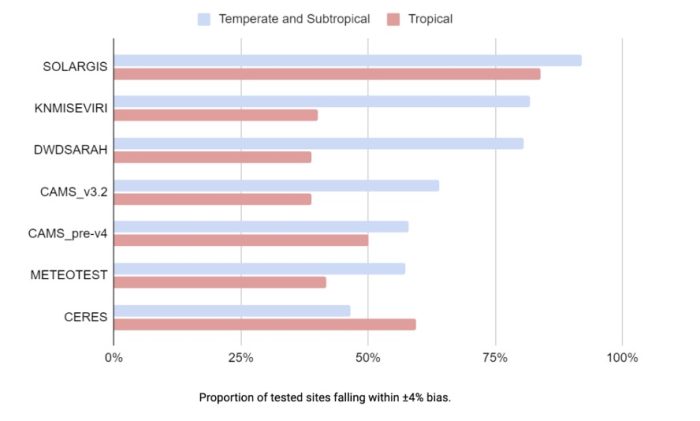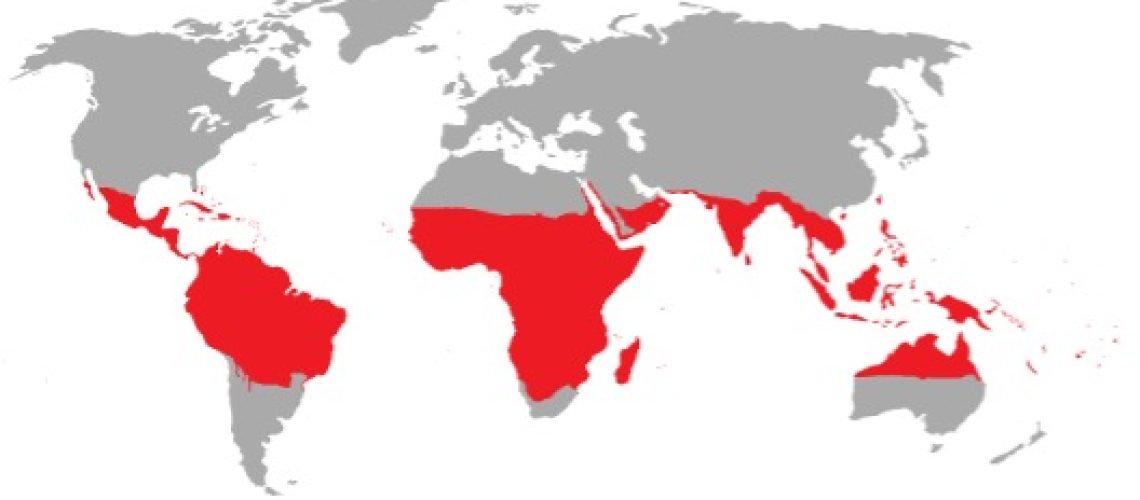A new analysis by Solargis finds that solar development in the tropics could be the next big market, as long as the industry improves its solar modeling accuracy in the region.
The report from the solar data and software firm reveals that the variance between modeled solar irradiance and actual measurements is more pronounced in tropical regions than in temperate and subtropical zones.
Solargis is urging developers and operators in the tropics to adopt best practices in solar data acquisition to supercharge project efficiency and output. The latest analysis, mirrored by the International Energy Agency (IEA), found that stakeholders are leaving substantial solar resource on the table, as deviations in the modeled solar irradiance, when compared to ground references, are higher in tropical regions than temperate and subtropical zones.
“Markets in the tropics have enormous opportunities for solar development,” said Marcel Suri, CEO of Solargis. “To realize this potential the industry must collaborate to improve the quality of resource assessments and solar forecasts by increasing the number and geographical distribution of solar measuring stations. We need to create confidence by delivering consistently excellent data to support project financing that underpins the significant growth potential of these regions.”
Higher deviations between satellite models and solar measurements in the tropics affects the accuracy and reliability of solar resource assessments and forecasts, which are essential for optimizing the financing, design, construction, and operation of solar power assets. According to Solargis’ analysis, by improving the quality and availability of ground-based measurements in tropical regions, solar developers and investors can unlock the enormous potential contained within these markets.

Solargis’ analysis is backed up by a recently published benchmarking report from the IEA. The IEA research also found that Solargis’ models demonstrate the highest levels of accuracy and reliability globally, with the highest accuracy in subtropical and tropical regions across the 129 sites tested worldwide.
The tropics generally receive lot of solar energy but are also affected by complex geography and climate. Solar irradiance variability is influenced by multiple factors, including fast moving and scattered clouds, dynamic changes of aerosols – enhanced by extensive forest fires, industrial growth and agricultural extensification – and by strong precipitation patterns. This affects accuracy of solar modeling as well as ground measurements.
The accuracy of solar modeling in the tropics can be increased through the buildout of more high-quality solar meteorological stations, subsequently utilized during the project development phase. Solar irradiance models can better address complex and fast changing patterns of solar resource by inputting high-resolution meteorological and solar data from more measurement stations.
Beyond public facilities owned by scientific research centers or universities, there is a notable scarcity of ground-based solar measurement stations from which to draw useful data. As a result, developers often privately invest in their own ground measurement systems within the design phase of their PV project. These are costly to maintain in remote areas, needing infrastructure investment as well as a specialist workforce to take the project from initial development through to operation. Additionally, this can cause project delays as it takes around 2 to 3 years until a significant amount of reliable and accurate data is available.
Tags: analysis, market research, Solargis, utility-scale



